Below is an article about the different Roman Towns in Britain. The Romans entered the British county through Kent where they set their first camp in 43 AD. Eventually, they conquered Britain and settled in with the existing English tribe. These tribes were Celtic. Their towns were destroyed by the Roman legions. The Romans built their own towns in the country and settled in.
Within 17 years of the Roman invasion, there were many Roman towns already in Britain. All these were connected by the different Roman Britain roads. Many Romans even migrated to Britain and many Celtic tribes left. Let us see the different towns in Roman Britain below.
Roman Town Verulamium
Contents

Verulamium is present-day St Albans. It is located in Hertfordshire, England. Much of the Roman town remains unexcavated. Much of the Roman agricultural land and parks have been built upon. The Roman road – Watling Street passes through this city. Many Roman sites are ancient monuments seen today. Verulamium belongs to a Celtic tribe called Catuvellauni. It is among the literally first places of Britain. Different coins were minted in this area, as many archaeological excavations suggest.
According to studies, there was a basilica in Verulamium and an amphitheater that was destroyed in a fire in the 2nd and 3rd century. Inscriptions are found on the remains of the forum. Earlier the town was built of stone and when it was reconstructed the second time, it was built out of timer. The city walls have been excavated from Roman times. There is a mosaic floor found in the museum of St Albans which is a precious collection of art from Roman times.
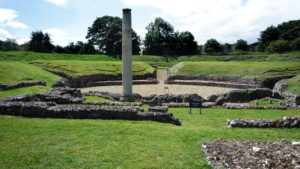
The Romans left this town around 400 AD to 500 AD.
Lindum
Lindum Colonia is the Roman name for the city of Lincoln, Lincolnshire, England when it was a Roman colony. The city was founded by Romans at the time of the reign of Roman Emperor Nero. The ninth legion inhabited in the town of Lindum. The Newport Arch in Lincoln is a surviving architectural marvel from the Roman times. It was the entrance to the upper city.
The settlement of Lindum was occupied by retired Roman soldiers. Many Roman baths, temples, and buildings have been excavated from the area. The Roman inscription is also seen on the walls. The Roman settlement spread itself toward the River Wilthum. This area was known as the Lower Colonia. In the third century, the kingdom was reorganized.

Later, it became the capital of Britannia Secunda. The development of Christianity is also seen in this area. It is said that the place was largely deserted after the Romans left.
The Northern end of the Roman Road of Fosse Way is in this city. Archaeologists suggest that the Roman town had an adequate water supply with a spring in the middle of the town.
Many tombstones of Roman people, British citizens from the Roman times and Roman soldiers have been excavated in the city.
Eboracum
Eboracum was an important province in the city of Britannia. It was the provincial capital of Britannia Prima. It is the same site where the Roman Empire fell completely and developed into the famous city of York, England. It is in North Yorkshire County in England. Due to its existing Romanism, there is a modern statue of Constantine the Great seen outside York Minister.

Eboracum was founded in 71 AD by Roman soldiers in Britain. The ninth legion of the Romans occupied by this constructed a military fort near River Ouse. The legion consisted of more than 5000 men. Many civilians also entered the town and settled toward the north of the river. Eventually, there was the construction of roads and streets in the city. Markets were seen to develop and public buildings were being erected. Private houses were also being built by the people.
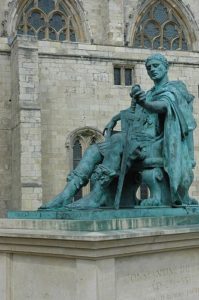
The Roman fort built by the military occupied a large area. It had limestone walls and the construction was monitored by Emperor Trajan. Emperor Hadrian visited this town in 122 AD.
Roman Town of Durnovaria
Durnovaria is the name of the Roman town that was in Dorchester, Dorset, England. The Maiden Castle was situated in this area. The people in the Pre – Roman era appear to have resisted the Roman rule. Their cemeteries have been excavated in the vicinity. There is also evidence of a Romano British temple from the 4th century in this town. There is also a fort that may have been occupied by Legio II. By 70 AD, the town was occupied by civilians.
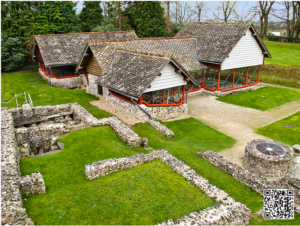
Archaeologists suggest that an artificial water supply existed. Public buildings were also erected in the town. A market center with pottery is seen near New Forest. Mosaic floors in houses of rich people have been excavated. It can be said that there were many villas in the place. Later, Anglo Saxons occupied this area and named it Dorchester. Many Roman features can still be seen on town walls and county halls. Poundbury Hill in the Dorset county was the ground for an ancient Roman amphitheater. Ruins of these can be seen and are a tourist attraction.
Camulodunum
Camulodunum was an ancient Roman town in Essex. Today, it is called Colchester. It was the first-ever capital of Roman Britain. It is not only the oldest Roman town but also the oldest town in Britain. It was home to the British Catuvellauni tribe. Coins from the time have been excavated and it is discovered that Camulodunum was a fully functioning town with a public system and market places even before the Romans entered.
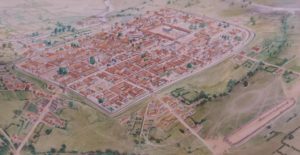
The conquest of Emperor Claudius was victorious in this town. There were two theatres and a large temple in the town. Over 50 cemeteries have been excavated from here. Many mosaic pavements of Roman origin have been excavated in this county. According to archaeologists, the population of this town was over 30000 people. Roman town walls that safeguarded the city still standstill in the county and are a tourist attraction for many.
In terms of trade, this city was one of the capitals. There were Roman brickmaking and wine-producing units all over the place. The city was also known as Colonia Claudia Victricensis which means the city of the victory of Claudius. It was a large part of the industrial center. Roman glasswork and metalwork can still be seen in these areas.
Londinium
Londinium was the name given to the city of London. It was the commercial center of Roman Britain and a famous Roman town. It was abandoned in the 5th century after the Romans left. It was founded in the mid-first century. Londinium expanded rapidly after the division of Britannia Superior and Britannia Inferior. The population of Londinium was more than 30000 to 60000 people. There was a large basilica formed in the area.
Many excavations suggest that the town was burnt in 122 AD. There was a defensive wall around the city. The Romans made mapped out the complete road system in London. The Romans constructed the London Wall which existed 1600 years. They also built the bridge on River Thames. The city had an adequate water supply. The temple of Isis was located here.
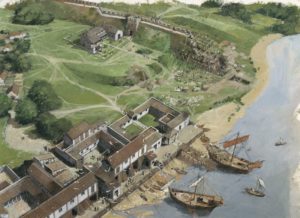
Tombstones of governors have been excavated along with palaces that they lived in. Governors of Diocletian lived in Londinium. The early Roman London was occupied by a cosmopolitan community. Watling Street – a Roman road passed through Londinium. The roads extend to other Roman towns – Chester and Wroxter. Roman Emperor Hadrian visited the city in 122 AD.
Calleva
This town was originally a Celtic town of the British Iron age. Today it falls under the city of Silchester in the Hampshire county. The British Callevan tribe occupied the area before the Roman invasion. Coins excavated from these areas suggest the name of ‘Commius’, a Celtic tribal leader. This indicates that the town was a fully functioning place of living.
During Roman times, the town was spread across 99 acres. The city was walled. Archaeological excavations suggest the existence of an amphitheater in the city. Even after the Roman era, the town continued to remain and progress.
Venta
Venta Icenorum was the capital of the Iceni tribe in Britain. This tribe is known for their revolt under the rule of Boudica their queen, against the Romans. Eventually, in 61 AD, the Romans occupied this town. It expanded to 55 acres of land. It is famous for the West Gate in town. Today, it is known as Caistor St Edmund in the Norfolk county. It is one of the most organized Roman Towns of all times.

Ratae
Ratae Corieltauvorum was a Roman town in the Roman province of Britannia. Today it is known as Leicester in the county of Leicestershire. The Roman road Fosse Way passed through this town. There was always a garrison stationed in the town. The existence of a river close by ensured adequate water supply.
Ruins of a Roman bath can still be seen in the area. According to excavations, Ratae might have been a poor town compared to Londinium and Eboracum. During the 4th century, Roman towers were erected in the city. There were also Roman town walls seen. Evidence suggests that the city might have undergone fire. The Saxons occupied this town after the Romans.
